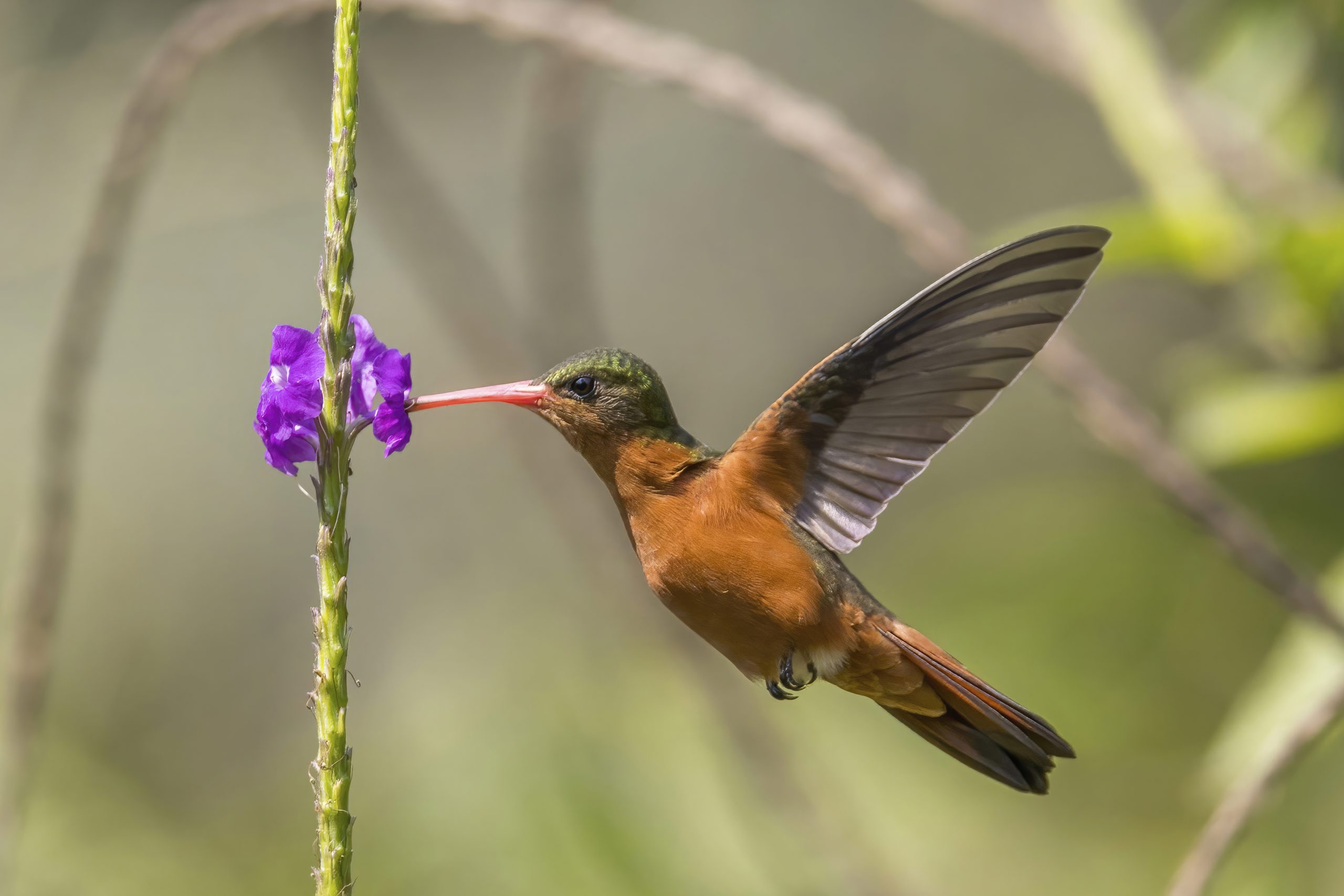Historical Background and Classification
The Cinnamon Hummingbird, scientifically known as Amazilia rutila, first caught the eye of French naturalist René Lesson in 1842 near Acapulco. Originally named Ornismya cinnamomea, it had to be renamed due to a prior claim on the name. Today, it’s categorized under the genus Amazilia, inspired by an Inca heroine from literature. The species name ‘rutila’ aptly describes its golden-red hues.
Subspecies Details
This hummingbird isn’t just one flavor; it boasts four subspecies that add variety to its presence across regions:
- Amazilia rutila diluta
- Amazilia rutila graysoni
- Amazilia rutila rutila (the original)
- Amazilia rutila corallirostris
Each subspecies brings a slight twist on the classic cinnamon coloration and size, adapting to different environments from Mexico down through Central America.
Physical Characteristics and Vocalizations
Typically measuring between 9.5 to 11.5 cm in length, these birds are a spectacle with metallic bronze-green upperparts and vibrant cinnamon underparts. Males flaunt a red bill with a black tip while females sport a subtler black bill with red at the base. Their calls range from high-pitched chips to squeaky tunes—a signature sound of Arizona’s hummingbird communities.
Habitat Preferences
In Arizona, these hummingbirds make themselves at home in various settings ranging from lush deciduous forests to arid thorn forests. They adapt well from sea level up to mountainous areas around 1,600 meters high—showcasing their versatility within Arizona’s diverse landscapes.
Behavior and Diet
True nectar lovers, Cinnamon Hummingbirds buzz energetically from flower to flower but also catch insects on the fly for some protein. They’re fiercely territorial—ready to defend their feeding grounds from other hummingbirds or even pesky bees trying to steal a sip.
Breeding Habits
Breeding is an all-year affair depending on their location within their range; in Arizona’s climate, this could vary slightly seasonally. Their nests are creatively crafted cups made of plant material and spider webs placed strategically on branches—demonstrating intricate natural architecture skills.
Conservation Status
Fortunately for bird enthusiasts in Arizona and beyond, the Cinnamon Hummingbird is currently classified as Least Concern by IUCN standards thanks to a stable population estimated at over half a million mature individuals despite localized habitat threats.
For those exploring or residing in Arizona’s rich biomes where these charismatic birds dwell, keeping an eye out for that distinct cinnamon streak can be both rewarding and enchanting.

